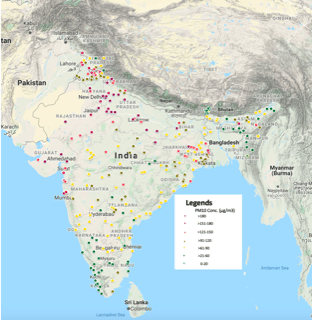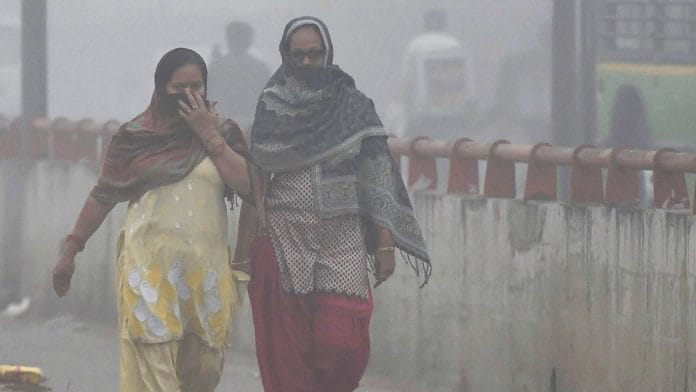New Delhi: Pollution levels in as many as 231 Indian towns and cities far exceed the acceptable limits for PM10 and should be included in the Narendra Modi government’s National Clean Air Programme (NCAP), a new study has suggested.
Greenpeace India’s ‘Airpocalypse IV’ released Tuesday took stock of pollution levels in 287 cities across the country.
At present, only 102 towns and cities are part of the NCAP — a national-level strategy launched by the environment ministry last year. It lays out city-specific five-year plans to tackle air pollution.
The Central Pollution Control Board (CPCB) had in August last year recommended 20 more cities to be added to the NCAP list, though these are yet to be included.
The new report has found that 231 towns and cities have PM10 levels exceeding the limit of 60 micro grams per metre cube, prescribed by the CPCB’s National Ambient Air Quality Standards (NAAQS).

It also noted that NCAP’s aim of reducing 20-30 per cent air pollution by 2024 will still not lead to breathable air quality in the country.
“Civil society has been demanding action plans at the city-level since every place has a different reason for increasing pollution levels,” Avinash Chanchal, one of the authors of the report, told ThePrint.
To truly curb pollution, however, authorities will need to have a regional-approach rather than city-centric plans, Chanchal added.
Also read: High CO2 levels, vanishing glaciers, extinctions – why climate change is more real in 2019
Lunglei has cleanest air
Of the 287 cities that the researchers studied, just one — Lunglei in Mizoram — had PM10 levels under the World Health Organization (WHO) prescribed level of 20 µg/m3.
At least 36 cities of West Bengal are highly-polluted and should be included under NCAP. Punjab, Maharashtra, Uttar Pradesh and Orissa respectively had 21, 21, 20 and 15 cities that exceeded acceptable PM10 limits.
Data for the Greenpeace report were recorded by air quality monitoring stations for at least 52 days in 2018.
The report also notes that there are several parts of the country where air quality is still not monitored, and these areas may have highly-polluted cities and towns.
“Polluted air has no political boundaries,” remarked Chanchal.
It is to note that NCAP is not notified under any Act of law and only works as a guiding document. The programme should be legally binding to improve compliance, the report said.
The study also suggested interim milestones for cities to track progress rather than having just a five-year target. “We will not be in a position to do anything if air pollution levels are not falling as required,” the study noted.
Also read: Engulfed in thick fog, Delhi experienced minimum temperature of 8.4 degrees






